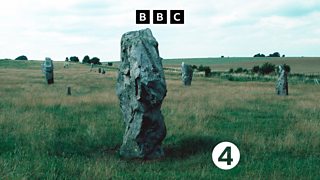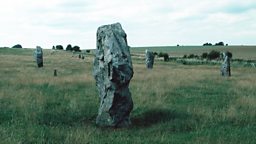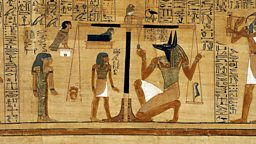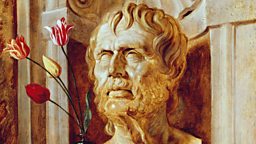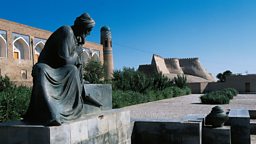10 things we know (or think we know) about megaliths
Megaliths are huge stones placed in prominent positions in the landscape. But why? In the absence of any written testimony, scientific advances are starting to plug the gaps and help archaeologists understand the significance of these mysterious structures.
However, many questions remain. In Radio 4’s In Our Time, Melvyn Bragg attempts to get closer to some answers with Vicki Cummings, professor of Neolithic archaeology at the University of Central Lancashire, Julian Thomas, professor of archaeology at the University of Manchester and Susan Greaney, lecturer in archaeology at the University of Exeter.

1. Megaliths are still being built
The word megalith comes from the ancient Greek “mega”, meaning huge and “lith” from “lithos”, meaning stone. The description covers a wide range of monuments from the prehistoric era to present day constructions in, for example, Madagascar and Indonesia.
There are 35,000 examples of megaliths in Europe, with the earliest, in Western France, dating back to 4700 BC. Meanwhile, examples in western Britain and Ireland go back to around 3900 BC.
2. Many megaliths are tombs
Megalith site types include standing stones and stone circles such as Stonehenge and Avebury but also: enclosed tombs; chambers of various types; the often hump-like “long barrows” with large stone chambers (eg in West Kennet near Avebury), where burials and cremations took place; passage tombs (eg Newgrange in Ireland), which can fit a large gathering of people; and dolmens, also known as portal tombs, which have oversized capstone roofs. “A lot of them seem to be burial monuments,” says Susan Greaney, “but many of them are not related to funeral activity.”
3. They were built at times of social upheaval
While megaliths were mainly being built down the western side of Britain and in Ireland, on the eastern side of England there were what Julian Thomas describes as “complementary monuments” made out of timber. The wooden monuments didn’t last as long as their stone counterparts, of course, but both types appear to have been built in “waves”, says Julian, and were not directly related to “a particular kind of people” but rather built at times of “dislocation” as the beginning of the Neolithic – with its significant population movement – would be characterised.
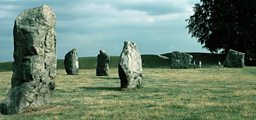
4. Megaliths were not settlements
The discovery of items like pottery, animal bones and bone flutes around megaliths suggests they were used as feasting sites and hubs of social activity rather than being places people lived in or next to. It’s likely that they played a significant role in bringing together dispersed agricultural populations, perhaps to exchange gifts, meet marriage partners, swap information and so on.

The discovery – via DNA tests – of five generations of family members buried together in Hazelton long barrow in the Cotswolds reveals the social cohesion of the sites.
5. Many of those buried in megalith tombs had met an untimely death
The social groups did not always co-exist in peace: “We think about one in ten people who were buried in chamber tombs were potentially killed either through an arrowhead or a blow to the head,” says Vicki Cummings.
6. Farmers may have been among the first megalith creators
During the Neolithic period, people were coming to Britain from continental Europe with the first domestic crops but also bringing traditions of building monuments. At one stage, the link between megaliths and farmers was thought to very strong because of this, but also because of the likelihood that only they would have the supplies to feed the people constructing the megaliths. However, there is evidence from other countries, including France and Japan, that hunter-gatherers were just as likely to establish megaliths.
7. Megaliths were part of a spiritual landscape
In the programme, Melvyn Bragg is particularly keen to establish any link between megaliths and religion. Vicki Cummings believes that “ritual specialists” were involved in burials and that they would have had preferential access to the tombs. The religious persuasion of these specialists would, according to Julian Thomas, be quite fluid.
“Because it's traditional oral religion rather than written religion,” Julian says, “I think it's very likely that you don't have a kind of a presiding deity or an idea of different realms like heaven or hell. Instead, I think it's likely that spirits, deities, ancestors are understood as being imminent in the landscape.”
8. Some were aligned with the cosmos
One of the reasons people look for religious significance in megaliths is that some of them appear to have been deliberately aligned, such as Stonehenge to the summer solstice and Newgrange to the winter solstice. However, not every megalith aligns in an obvious way – sometimes it’s more a case of alignment with a particular view, such as of hilltops or mountain ranges.
“When people are actually constructing these monuments and reorganising the landscape,” Julian says, “it's as if they're engineering the cosmology at the same time.”

9. Megaliths were decorated with ambiguous art
Some megaliths are decorated with designs etched on the surface of the stone, and their meaning is unclear: “It's geometric: swirls, zigzags, concentric circles and so on,” explains Julian Thomas.
The significance of the art could be more about the medium than the message and, as Julian says, “part of the process of constructing the monument”. However, he adds: “In many societies around the world today, you have symbols that have many meanings, and those meanings are elicited only in the ritual. So perhaps it's part of a system of secret knowledge.”
10. Megaliths will always retain their mysteries
We will probably never know the exact meaning of the megalith sites. The clues are punctuated with inconsistencies. For example, not every site in the west of England that was near a source of stone had a megalith. For those who chose to build them, says Vicki Cummings, the megaliths “just seem to be something that really articulated and meant a lot to them. Whatever was going on in those particular communities, whatever building a monument meant to those people, they needed to do it again and again and across the landscape.”
